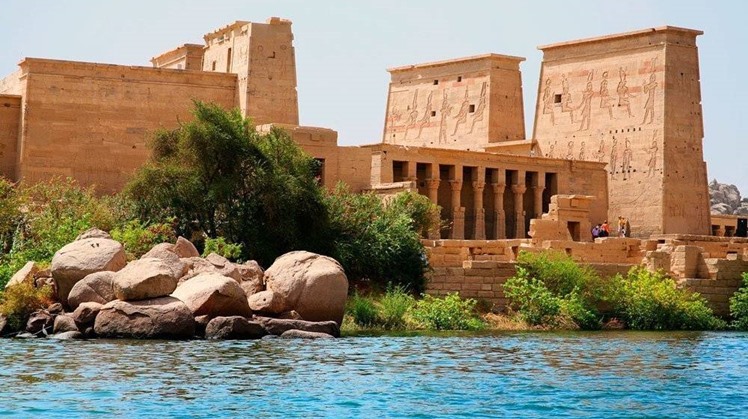Nubia is a region geographically located in southern Egypt and northern Sudan, where there are many important sites in the region between Aswan and Abu Simbel, and in 1979 ten sites were added to the UNESCO World Heritage List.
And the sites that have been added to the World Heritage site, which are from south to north: the temples of Ramses II in Abu Simbel, Amda, Wadi al-Seboua, Kalabsha, and the elephants of “Agilkia Island”, the ancient granite quarries and the unfinished obelisk in Aswan, the Islamic cemetery, the ruins of the city of Elephantine. Old, St. Simeon's Monastery, Old and Middle Kingdom Tombs in Aswan "what is known as the Tombs of the Nobles".
The construction of the Aswan High Dam in the 1960s threatened to flood these ruins, but they were all preserved thanks to the efforts of an international campaign launched by UNESCO from 1960 to 1980.
Dr. Hussein Abdel-Basir added, in previous statements to "The Seventh Day", that the construction of the High Dam had the greatest impact on the development of archaeological research in Nubia, and that many Egyptian and international archaeological missions excavated for antiquities in Nubia with an unprecedented intensity.
A column with a capital in the shape of Hathor's head
He continued: Each mission conducted complete archaeological research and recorded all the results of the archaeological excavations that were being found with accuracy and care, and in a short time, UNESCO succeeded in forming a global campaign to obtain the necessary financial aid, services and experts, and on that occasion, a large party was held in The General Headquarters of UNESCO in Paris to announce the global appeal to contribute to the campaign to save the antiquities of Nubia.
Dr. Hussein Abdel-Basir indicated that the sixteen Egyptian Lower Nubia temples that were rescued are: Philae Temple, Daboud Temple, Qartasi Temple, Tafa Temple, Kalabsha Temple, Beit El-Wali Temple, Dandur Temple, Jurf Hussein Temple, Dikka Temple, Coban Temple, Wadi al-Sabua Temple, Amada Temple, al-Durr Temple, Qasr Ibrim Castle, Abu Simbel Temple, and Abu Odeh Temple.
Dr. Hussein Abdel-Basir pointed out that the condition of the temples was good until the rise in the level of the Nile River, which began to result from the construction of the High Dam and Lake Nasser behind them, was a cause that threatened to drown them, which made it necessary to move them to keep them from drowning, and the process of moving temples from The most difficult building transfer operations throughout history, as it was a great challenge for architects and archaeologists alike to succeed in implementing that gigantic project, and the process of saving the temples from drowning was carried out after the construction of the High Dam in the sixties of the twentieth century, and that process lasted for several years.
 Sun, Mar. 26, 2023
Sun, Mar. 26, 2023